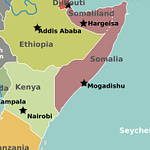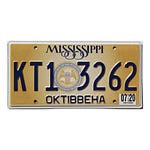OBJECTIVE:
In this short social science lecture we will look at the Twi-Akan word Kumasi. First we will look at the background of the city that is named after the combination of these two words “Kum” & “Ase”. Then we will demonstrate how these to Twi-Akan words go back to two Ethio-Semitic words; which, go back to two Paleo-Hebrew or Biblical Hebrew root words “Qum” & “Asa”. In Twi-Akan “Kum” & “Ase” means under the Kum tree or the place of meeting. In Paleo-Hebrew “Qum” “Asa or Asar” means the place where people stand for meeting , or the gathering place for the standing meeting, or meeting place under the STALK (TREE). Remember the Ashanti people are Hebrew-Israelites descendants from the Kingdom of Judah whose Kings come from Jerusalem. We have done history lesson lectures on this before:
The Jews or Israelites in Ancient times blended the religions of Phoenicia, Kemet, Cush, & Cushitic-Assyria into a syncretic form of Yahweh worship. With this Trees or Groves became sacred places of worship & meeting. The Israelites who migrated into West Africa & became what is today known as the Akan peoples kept this custom of the sacred tree as a meeting place.
BACKGROUND:
Kumasi (historically spelled Comassie or Coomassie, usually spelled Kumase in Twi language) is a city in the Ashanti Region, and is among the largest metropolitan areas in Ghana. Kumasi is the second-largest city in Ghana, after the capital, Accra. The city rose to prominence in the 1600’s, when it became the capital of the Asante Empire due to the activities of its King, Osei Tutu. The Chief of Kumasi, known as the Asantehene, also served as the King of the empire. With their 1701 victory over Denkyira, the Asante Kingdom became the primary state among the Akan’s. European sources in the late 19th century mentioned the city's neatness such as the account of F. Boyle in 1874 who stated Kumasi's smell "are never those of sewage" as well as Brackenbury, who wrote around 1873 that "the streets are generally very broad and clean, and ornamented with many beautiful banyan-trees affording grateful shade from the powerful rays of the sun."
Twi ([tɕᶣi]) is a branch of the Akan language spoken in southern and central Ghana by several million people, of Akan background, & it is the largest of the seventeen major ethnic groups in Ghana. Twi has about 29 million speakers. They come from the Akan clans of: Bono, Asante, Akuapem, Ahafo, Akyem, Asen, Dankyira and Kwawu.
ETYMOLOGY:
The name Kumase (Kumasi is the English spelling not the Twi-Akan spelling; “asi” has a different meaning in Twi-Akan which is also of Hebrew in origin) was derived from the Twi language, meaning “under the Kum tree”. The word "ase" means 'under', 'down', 'below' or 'something that has endured or survived'.
In Kumasi, Ghana, stands an ancient large tree. Known as the Kum tree, it is also referred to as the Banyan tree due to its sprawling branches and aerial roots. The name “Kumasi” traces back to this very tree. Oral tradition states that under the shade of the Kum tree, solemn meetings were held, decisions were made, and leaders deliberated on matters of governance. The Twi phrase “Kum Ase,” which translates to “Under this Tree,” became synonymous with the gathering place where chiefs, elders, and community members assembled.
“Kum” comes from an Ethio-Semitic word which comes from the Paleo-Hebrew or Biblical Hebrew root word “Qum”.
“Ase” comes from an Ethio-Semitic word which comes from the Paleo-Hebrew or Biblical Hebrew root word “Asa or Asar”.
https://www.blueletterbible.org/lexicon/h6113/kjv/wlc/0-1/ TWOT Reference: 1675/c
Google translate “under” from English to Akan.













GHANAIAN ASHANTI CITY OF "KUMASI" IS AN AFRO-SEMITIC HEBREW WORD